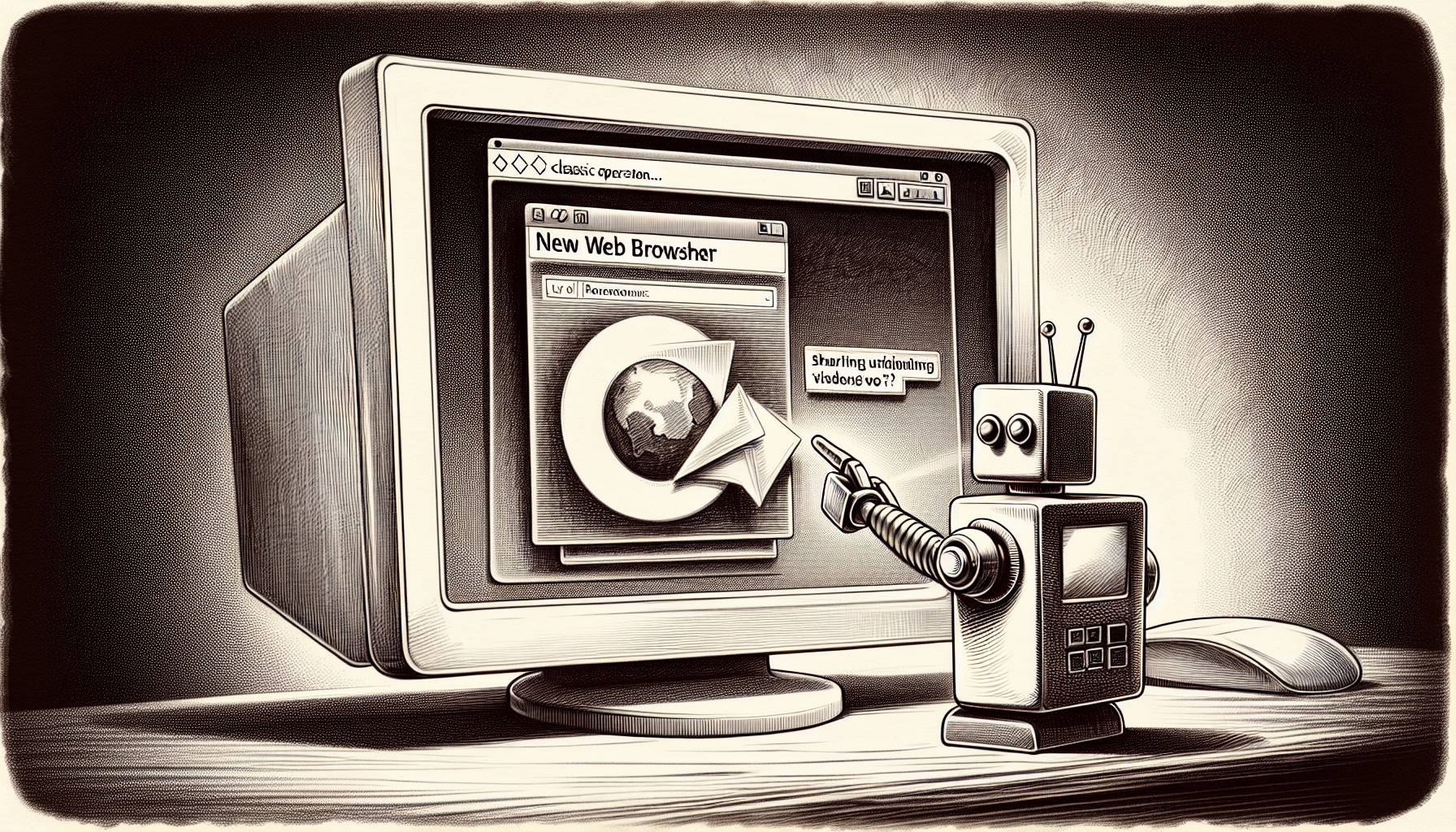With the growing significance of mobile applications in the digital landscape, understanding app development costs has become a crucial aspect for businesses worldwide. The cost of developing a mobile app can vary greatly based on a multitude of factors including complexity, platform, features, and more. This article aims to provide an in-depth exploration of the various elements that influence the cost of creating an app.
App Development: A Brief Overview
Mobile app development involves the process of creating software applications that run on mobile devices. This involves a series of intricate procedures including ideation, design, development, testing, and deployment. Each stage presents its own set of challenges and costs.
Factors Influencing App Development Costs
App development costs are not a singular, fixed amount. Several variables come into play, shaping the final price tag of the project. Here are some of the key factors that influence the cost of developing a mobile app:
1. App Functionality and Purpose
The purpose and functionality of your app dictate its complexity, which in turn, affects the development costs. An app with basic functionality, like a calculator or note-taking app, would cost significantly less than a complex eCommerce or social media app.
2. Mobile Platforms and Devices Supported
Whether your app is being developed for a single platform (iOS or Android) or both, impacts the cost. Additionally, supporting a range of devices with varying screen sizes and hardware capabilities also adds to the development cost.
3. Integration Points
If your app needs to integrate with third-party services, such as social media platforms, payment gateways, or other APIs, it would require additional efforts, leading to higher costs.
4. Use of Visual Objects and Smartphone Hardware Features
The complexity of visual objects and the use of smartphone hardware features such as GPS, NFC, motion sensors, etc., can also increase the cost of your app.
5. Maintenance Plan
Post-launch, your app will require regular updates and maintenance to address bugs, introduce new features, and keep up with OS updates. These ongoing costs should also be factored into the overall price of app development.
App Development Cost Benchmarks
App development costs can be broadly categorized based on the complexity of the app. Below is a general classification:
- Simple apps (with basic UI and minimal features): $16,000 – $32,000
- Medium complexity apps (more features and complex UI): $32,000 – $48,000
- Complex apps (advanced functionalities and enterprise-level features): $72,000 and above
Stages of App Development and Associated Cost
App development is a multi-step process, each stage involving its own set of tasks and associated costs. Here are the primary stages involved in app development:
1. Planning Stage
This stage involves defining the app’s purpose, features, and requirements. This stage is relatively less expensive, costing about 10% of the total app development cost.
2. Design Stage
This stage involves creating the UI/UX of the app. The complexity of the design can significantly influence the cost. On average, the design phase amounts to about 15% of the total app development cost.
3. Development Stage
In this stage, the app is actually built. It is the most time-consuming and expensive phase, taking up to 60% of the total app development cost.
4. Testing Stage
Once the app is built, it needs to be thoroughly tested for bugs and glitches. The cost of this stage is typically around 10% of the total app development cost.
5. Deployment Stage
After testing, the app is finally launched on the app stores. This stage costs about 5% of the total app development cost.
6. Maintenance Costs
Beyond the initial development, your app will require ongoing maintenance and updates. This typically costs between 15% to 20% of the original development cost per year.
App Development Cost Calculators
To help businesses estimate the potential costs of app development, several online calculators have been developed. These tools guide users through a series of questions or parameters, providing an estimated cost based on the responses.
Here are a few popular app development cost calculators:
- Cleveroad calculator
- Buildfire calculator
- Estimate My App calculator
- Inoxoft calculator
- How Much to Make an App
- Andreasley calculator
- Litslink calculator
Budgeting and Planning for Cost-Effective App Development
In the journey of app development, budgeting and planning stand as the initial, critical steps. A well-structured budget and a detailed plan can significantly reduce financial uncertainties and provide a clear roadmap for the development process.
Understanding Your Requirements
Before setting a budget, it’s crucial to understand the requirements of your app. This includes defining the app’s purpose, target audience, desired features, and functionality. A clear understanding of these elements helps in prioritizing which features are essential and which can be added later, thereby controlling initial costs.
Setting a Realistic Budget
Setting a realistic budget involves more than just estimating the costs of design and development; it also includes marketing, maintenance, and unexpected expenses. It’s important to research and compare prices from different developers or agencies and consider all possible costs to avoid surprises. Remember, a cheaper initial quote might not always be the best in the long run if it compromises quality or does not include post-launch services.
Prioritization of Features
Prioritizing features is a strategic approach to manage costs effectively. Start with a minimum viable product (MVP), which includes only the essential features that solve the core problem for your target audience. This not only reduces initial development costs but also allows you to test the app’s market fit. Additional features can be added later based on user feedback and financial feasibility.
Planning for the Long Term
Long-term planning is essential for sustained success and cost management. Consider future updates, potential expansions, and scalability from the beginning. This foresight can prevent costly reworks and ensure that the app remains competitive and relevant.
Creating a Contingency Fund
Unexpected issues can arise during app development, leading to additional costs. Creating a contingency fund, typically 10-20% of your total budget, can provide a financial cushion and prevent project delays.
A well-planned budget is the foundation of a successful app development project. By understanding your app’s requirements, setting a realistic budget, prioritizing features, planning for the long term, and preparing for unexpected costs, you can manage your finances effectively and increase the likelihood of your app’s success. Remember, the goal of budgeting and planning is not just to minimize costs but also to ensure that you invest wisely in creating a valuable product for your users.
Understanding and Reducing Maintenance Costs
Once an app is launched, the journey doesn’t end there; it enters the maintenance phase. Maintenance is essential for keeping the app updated, secure, and functioning smoothly. However, these ongoing costs can accumulate, affecting the overall budget if not planned properly.
Long-Term Maintenance Strategies
Developing long-term maintenance strategies is crucial for minimizing unexpected expenses. Opt for a modular design during the development phase, making the app easier to update and maintain. Regularly review and update the codebase to prevent it from becoming obsolete, which can lead to more significant costs down the line.
Automating the Process
Automation can play a significant role in reducing maintenance costs. Implement automated testing to identify bugs and issues quickly. Automate routine maintenance tasks where possible, such as data backups and security checks, to reduce the need for manual labor and decrease the likelihood of human error.
Prioritizing User Feedback
User feedback is invaluable for identifying areas that require immediate attention, thereby reducing long-term maintenance costs. Prioritize updates based on user feedback to ensure that resources are allocated efficiently, addressing critical issues that could otherwise become costly if ignored.
Regular Updates and Iterations
Regular updates are essential for keeping the app relevant and reducing maintenance costs over time. Plan for small, regular updates instead of large, infrequent ones. This approach can help spread out costs and ensures that issues are addressed promptly, preventing them from escalating into bigger problems.
Choosing the Right Technology
The choice of technology can significantly impact maintenance costs. Opt for technologies that are well-supported, scalable, and known for their stability. While cutting-edge technologies might seem appealing, they can become obsolete quickly or lack the necessary support, leading to higher maintenance costs.
Outsourcing vs. In-House
Consider the pros and cons of outsourcing maintenance versus handling it in-house. While outsourcing can be cost-effective and provide access to specialized expertise, maintaining a level of in-house capability ensures that urgent issues can be addressed promptly. A balanced approach, utilizing both in-house and outsourced resources, can often be the most cost-effective solution.
Effective maintenance is the key to the sustainable growth of your app. By implementing long-term maintenance strategies, automating processes, prioritizing user feedback, scheduling regular updates, choosing the right technology, and balancing outsourcing with in-house efforts, you can significantly reduce maintenance costs. Remember, investing in maintenance is not just a cost but a commitment to the ongoing success and reliability of your app, ensuring a better experience for your users and a more predictable budget for your business.
Monetization Strategies to Offset Development Costs
Developing an app is an investment, and finding effective ways to generate revenue from your app can help offset development and maintenance costs. Choosing the right monetization strategy is crucial to ensure it aligns with your app’s purpose, your business goals, and your users’ expectations.
Exploring Various Monetization Models
There are several monetization models to consider, each with its advantages and challenges:
- In-App Purchases: Allow users to buy goods or services within the app. This works well for gaming, productivity, or health and wellness apps.
- Subscriptions: Offer regular access to content or features for a recurring fee. Ideal for apps offering premium content, services, or features.
- Advertisements: Generate revenue by displaying ads within your app. Suitable for apps with high user engagement and traffic.
- Freemium Model: Provide the app for free, but offer premium features or content for a fee. This encourages users to try the app before making any purchases.
- Sponsorships and Partnerships: Partner with brands or companies to offer sponsored content or experiences within the app.
Maximizing Revenue Without Compromising User Experience
While monetization is essential, it’s important to balance revenue generation with a positive user experience. Avoid overly intrusive ads or paywalls that hinder user engagement. Provide clear value for any in-app purchases or subscriptions to encourage user buy-in.
Testing and Optimization
Test different monetization strategies to see what works best for your audience and app type. Use A/B testing to compare different approaches and analyze user behavior and feedback. Continuously optimize your monetization strategy based on these insights.
Transparent Communication with Users
Be transparent about your monetization methods with your users. Clear communication about what they can expect in terms of ads, in-app purchases, or subscription benefits can build trust and improve user satisfaction.
Legal and Ethical Considerations
Ensure that your monetization strategies comply with legal standards and respect user privacy. Adhere to platform guidelines, especially regarding in-app purchases and advertisements, to avoid penalties or removal from app stores.
Choosing the right monetization strategy is a delicate balance between generating revenue and maintaining a positive user experience. By exploring various models, testing and optimizing your approach, communicating transparently with your users, and adhering to legal and ethical standards, you can create a sustainable revenue stream that supports your app’s growth and success. Remember, the most effective monetization strategy is one that aligns with your users’ needs and preferences while also supporting your business objectives.
Legal Considerations and Compliance in App Development
Navigating the legal landscape is a crucial aspect of app development that often goes overlooked. Ensuring your app complies with laws and regulations not only protects you from legal issues but also builds trust with your users. This section explores key legal considerations and how to address them effectively.
Understanding Privacy Laws and Data Protection
Privacy laws, such as GDPR in Europe and CCPA in California, have set strict guidelines for handling user data. It’s essential to understand the specific laws applicable to your app, especially if you’re operating across different regions.
- Implementing Data Protection: Incorporate strong data protection measures from the start. This includes using encryption, securing user data, and ensuring third-party services comply with privacy laws.
- Privacy Policy and User Consent: Develop a clear privacy policy that outlines how you collect, use, and store user data. Ensure the policy is easily accessible and obtain legal consent from users before collecting their data.
Intellectual Property Rights
Protecting your intellectual property (IP) is crucial for maintaining your app’s uniqueness and value.
- Trademarking: Consider trademarking your app’s name, logo, and any distinctive features to protect your brand identity.
- Copyrights and Patents: Copyright your app’s content and consider patenting unique and novel functionalities to prevent unauthorized use or copying.
User Agreements and Terms of Service
User agreements and terms of service are legally binding documents that outline the rules and guidelines for using your app.
- Clarity and Accessibility: Ensure these documents are clear, concise, and easily accessible within the app.
- Updates and Changes: Notify users of any changes to the terms and regularly review these documents to ensure they remain up-to-date and compliant with new laws.
Compliance with Platform Guidelines
App stores have their own set of guidelines and requirements.
- Understanding Guidelines: Familiarize yourself with the guidelines of the platforms where your app will be available, such as Apple’s App Store Guidelines and Google’s Play Store Policies.
- Regular Review and Updates: Keep your app updated in accordance with platform changes to avoid removal or suspension from the app stores.
Addressing Accessibility and Inclusivity
Ensuring your app is accessible to all users, including those with disabilities, is not only a legal requirement in many regions but also a best practice for inclusivity.
- Implementing Accessibility Features: Incorporate features such as voice commands, text-to-speech, and adjustable text sizes to make your app more accessible.
- Regular Testing for Accessibility: Conduct regular audits and user testing to ensure your app remains accessible and inclusive.
Conclusion: Prioritizing Legal Compliance
Adhering to legal requirements is a non-negotiable aspect of app development. By understanding and implementing data protection strategies, respecting intellectual property rights, ensuring clear user agreements, complying with platform guidelines, and prioritizing accessibility, you can mitigate legal risks and build a trustworthy app. Remember, while navigating legal considerations may seem daunting, it’s an investment in your app’s long-term success and reputation. Consulting with legal experts specializing in app development can provide tailored advice and peace of mind throughout this process.
Final Thoughts
Understanding the varied factors influencing app development costs is crucial for businesses planning to venture into the app market. By considering elements like app complexity, platform, features, and maintenance costs, businesses can better estimate their app development budget. Remember, while the initial development cost is significant, ongoing maintenance and updates are equally important for the app’s success.
In conclusion, managing app development costs requires a strategic approach and careful planning. By understanding the factors that influence these costs, businesses can better plan their budgets, ensuring the successful development and launch of their mobile app.
FAQ: App Development Costs and Considerations
How much does it cost to develop a mobile app?
The cost to develop a mobile app can vary widely, typically ranging from $10,000 to $500,000. Factors affecting the cost include the app’s complexity, features, platform (iOS, Android, or both), and the geographic location of the development team. Simple apps are less expensive, while complex apps with advanced features like payment systems or GPS tracking can be at the higher end of the spectrum.
How much does it cost to develop an AI app?
Developing an AI app can be more costly due to the advanced technology and expertise required. Prices can range from $20,000 to over $1,000,000, depending on the app’s complexity, the type of AI technology used (machine learning, natural language processing, etc.), and the data processing needs.
What is the average startup cost for app development?
The average startup cost for developing a basic app is usually between $20,000 and $80,000. However, this can increase significantly for more complex apps or those requiring backend infrastructure, third-party integrations, or advanced security features.
How much does freelance app development cost?
Freelance app development costs can vary based on the developer’s experience, location, and the project’s requirements. On average, freelance developers may charge anywhere from $20 to $150 per hour. Therefore, a basic app could cost from $5,000 to $50,000 when working with a freelancer, depending on the total hours needed.
Is it expensive to build AI?
Building AI systems can be expensive, as it often requires significant computing resources, access to large datasets, and specialized talent. Costs can range from tens of thousands to millions of dollars, depending on the project’s scope and complexity. However, leveraging existing AI platforms and tools can reduce costs.
Can I create an AI for free?
Yes, it is possible to create a basic AI for free using open-source libraries and platforms such as TensorFlow, Scikit-learn, or Keras. However, while the software may be free, you might need access to hardware and data, and you may incur costs related to these, depending on the AI’s complexity.
Why does it cost so much to make an app?
App development involves multiple stages, including planning, design, development, testing, and deployment. Each stage requires the expertise of different professionals, including designers, developers, and testers. Additionally, the more complex the app, the more time and resources are needed, which increases the cost.
How long does it take to build an app?
The time to build an app can vary significantly based on its complexity and scope. A simple app might take 3 to 4 months to develop, while a more complex app could take 6 to 12 months or more. Planning, revisions, and testing phases can also extend the development time.
How much should I charge for an app design?
Charging for app design depends on the design’s complexity, the designer’s experience, and market rates. Typically, app design can cost anywhere from $2,000 to $35,000. For freelancers, rates might range from $50 to $200 per hour, while design agencies may charge more due to their additional resources and expertise.
Featured Image Credit: Photo by Ibrahim Boran; Unsplash – Thank you!
















